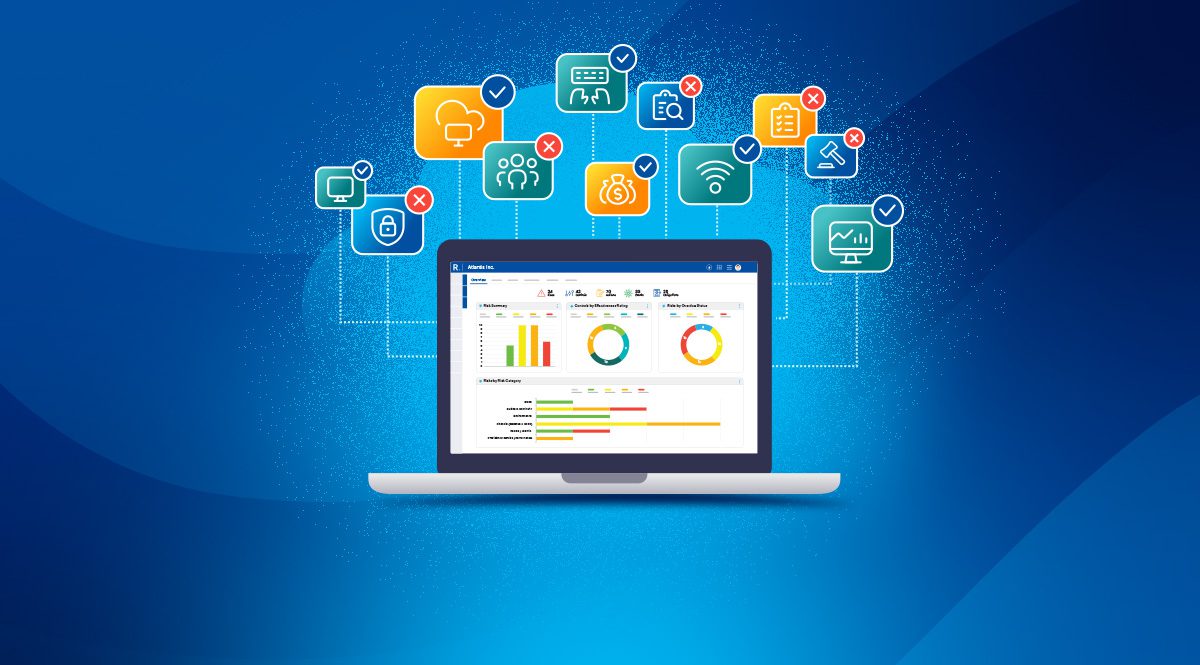Most IT leaders today are stuck addressing technical debt in the form of outdated or redundant legacy systems and applications. In a business landscape characterised by uncertain economic conditions where profit is never a guarantee, each day spent paying for unnecessary or duplicate systems is revenue lost. Which is why there has never been a better time to streamline your digital operations through application rationalisation.
On average a large organisation with 2000+ employees uses 100+ active applications; our experts at Camms have even seen cases where organisations are using over 800! Many of these applications are probably draining their resources, budget, and time – this holds particularly true for companies that operate a decentralised purchasing model across multiple sites.
Thanks to the rapid growth of new business models and technology, it’s perhaps unsurprising that the number of applications an organisation relies upon has ballooned significantly imposing heavy costs on businesses from a financial and efficiency standpoint as well. Application rationalisation is an essential way to help your business cut to the root of the problem by reducing costs, enhancing security, and accelerating innovation wherever possible!
This blog discusses the impact of poor application portfolio management, highlights some of the key benefits and challenges associated with application rationalisation and explores how to streamline your technology stack and ensure that your organisation is up to date with the latest technology solutions.
What is Application Rationalisation?
Application rationalisation is the process of assessing which of the different software applications used by your business should be retained or retired from your operations. The primary goals of application rationalisation are to cut costs, streamline &standardise processes, improve efficiency, optimise resource allocation, and relieve the support burden on IT teams. The initiative is typically headed up by the CIO of the organisation.
Because modern enterprises employ a breadth of digital tools used for everything from human resources, budgeting, operations, finance, and customer relationship management, application rationalisation is far more comprehensive than a quick audit. It involves a thorough investigation into each application covering how it is used and by who, how it is managed & supported, what impact it has on other business areas, how much it costs, and much more.
Why Rationalise?
By starting an application rationalisation programme, progressive organisations have the opportunity to save money and streamline & automate processes by removing redundant or outdated software.
According to technological research & consulting giant Gartner, it is estimated that organisations which follow best practices for application rationalisation can reduce total cost of ownership by 30%, with 80% of the entire IT budget usually being made up of application costs, this can prove to be quite a significant saving.
In most organisations the main drivers for application rationalisation are closely tied to revenue, profit growth, cost savings, risk mitigation, and process efficiencies. In other cases, organisations that have expanded through a series of mergers & acquisitions must embark on an application rationalisation journey to consolidate the multiple software applications they have accumulated from different organisations. These teams typically have a mandate to reduce operating expenses and standardise processes fast. Conflicting solutions will be heavily scrutinised to ensure they keep the best tool for the job.
Other organisations recognise the need to develop a baseline application inventory to support the enterprise’s data protection, disaster recovery, and business continuity plans – and this comprehensive inventory often turns into a catalyst for an application rationalisation initiative.
Key Benefits of Application Rationalisation
There are many benefits of application rationalisation; these include:
Heightened productivity – By rationalising applications, organisations can drastically simplify their IT environments, reduce IT workload, improve workflows & processes, and cut out duplicate tasks – resulting in higher productivity.
Cost Savings – Opting to reduce the number of applications in your software portfolio can save on support licences, maintenance costs, and licencing fees – freeing up the budget to meet other vital business needs.
Enhanced Security – Having too many applications increases an enterprise’s attack surface – opening it up to cyber threats. Application rationalisation helps businesses to enhance security by reducing the likelihood of security incidents.
Improved decision-making – Your organisation’s software portfolio must align with its current business objectives & priorities. By rationalising applications and managing more processes in the same platform, organisations can generate enhanced business intelligence by mapping data across business functions – providing insights to improve decision-making.
Better Compliance – Outdated applications become a liability over time as they become incompatible with new technologies and unable to support evolving business needs. By reducing the number of applications in use, businesses can achieve compliance with relevant regulations – and avoid fines, reputational damage, and penalties for non-compliance.
Simplified IT environment – Consolidating applications reduces complexity and improves IT responsiveness – by simplifying their IT environment, it makes things easier to manage & maintain – reducing IT man hours and improving security.
Focus on Innovation and Growth – Now with more budget freed up, businesses can begin to leverage data in ways that can unlock new revenue streams that drive profit growth via innovative technologies & processes like machine learning and artificial intelligence.
Key Challenges Around Application Rationalisation
While it’s clear that application rationalisation has some significant benefits it is not a simple task and comes with equally significant challenges. These include:
Lack of visibility – Because organisations may have many different software solutions, processes, and applications – all developed & managed by different teams – getting visibility into its application portfolio can be a challenge for organisations. Teams will need to work with multiple departments & stakeholders to collate accurate and up-to-date information on each application’s value, cost, and usage.
Resistance to change – Your employees or organisational stakeholders might be attached to specific processes & applications and pose resistance to seeing them consolidate or retired.
Limited Resources – A resource-intensive process, application rationalisation requires significant expertise, effort, and time. Organisations with limited budgets or resources may need help to undertake this approach effectively.
Unforeseen issues – The process of rationalising applications might reveal unforeseen issues that might not have been anticipated during the planning phase – such as applications being more interconnected than initially thought to be – making it difficult to retire them without having an impact on other systems.
Organisational Silos – Application rationalisation needs close collaboration between different departments from various business units and departments. A lack of information sharing can hinder effective collaboration slowing down the rationalisation process.
Technical Complexity – Technical challenges facing this process include integrating systems, migrating data, and updating software – all of which can be rather complex and require specialised expertise and knowledge.
Start your Application Rationalisation Journey with the Right Tools
Implementing application rationalisation is a complex initiative, which is why smart organisations keen to launch or expand on this process must have the right tools & teams in place to support their efforts. Building that initial inventory of each application and the critical data needed to assess its validity, effectiveness, and cost can be a challenge.
The Camms platform can provide a central register to build an exhaustive inventory of applications including; what it does, who the supplier is, how much it costs, who uses it, and how it is supported. Application rationalisation teams can customise the register to capture any specific information. Workflows can be used to send out online forms to each process owner to capture the information required – with all data feeding directly into the platform.
As information is collected, organisations can visualise the data through a series of dashboards & reports – enabling them to spot areas where applications overlap or identify overpriced or difficult to maintain systems. This will help teams to make those important decisions about which systems to keep and which to retire.
Everything which is recorded through the application rationalisation workflow is stored in an easy to use and centralised register. With our range of customisable filters, users can easily find the information they are looking for and effortlessly compare vendors and applications.
What Processes Could I potentially Consolidate into the Camms Platform?
The Camms platform is packed with a wealth of functionality making it a great platform for companies to keep in their portfolio if they are going through an application rationalisation programme. The intuitive and easy to use platform enables businesses to automate a wide range of business processes, logs, and registers – bringing them online through a modern integrated platform.
Risk management: Set up a comprehensive risk register, track progress, and define KPIs and tolerances based on your risk appetite. Use the structured framework to define ownership and set key risk indicators, use automatic workflows & alerts to flag problems, and implement structured approval processes.
Compliance management: House a comprehensive obligations library of relevant regulations, legislation, policies, and internal procedures. Set a structured process for version control, approval, ownership, and regulatory change. The solution integrates with third-party regulatory content providers to offer regulatory horizon scanning.
Strategy management: Break down your strategic goals & objectives into lower-level projects & tasks and allocate them across the organisation to easily monitor performance and track progress.
Incident management: Facilitates incident, near-miss, and hazard reporting in real-time and triggers the investigation process post-event. Link incidents back to the originating risks.
Audit management: Schedules and manages internal and external audits and formalises the results and required actions. Provides a complete history of all your audits and their findings and any outstanding actions.
Cyber and IT risk: Manage the complex framework of compliance requirements and risks related to ISO standards and data privacy laws like GDPR. Monitor IT risk and track cyber related incidents.
Project Management: A best-practice project management solution, to plan out complex projects, including timelines, scheduling, budgets & spend, and task & action management. Projects can also link to risk & compliance requirements.
Talent Management: Our performance management capabilities enable teams to bring employee assessments and appraisals online to conduct regular performance reviews and track the results. Set up a job library and allow employees to request training.
The Camms platform offers so much more than GRC – we can automate any business process and bring it online in one integrated platform. Our flexible workflows & registers allow organisations to automate any process using the following functionality:
- Online forms that feed directly into the platform.
- Flexible, searchable online registers & logs.
- Configurable workflows that can automate signoffs, approvals, and escalations.
- External facing portal to collect data from third parties and anonymous sources.
- Dashboards & reports to easily visualise results & insights.
- Accessible online or via a mobile app to capture data anytime, anywhere.
Business processes that can be easily migrated into the Camms platform include:
|
|
Antiquated or legacy systems have a serious potential to weigh down an organisation. Our flexible and intuitive platform can help to consolidate your processes into one platform, providing a single source of truth – eliminating multiple point solutions and integrating your data to provide deep insights into business performance.
Ready to start your application rationalisation journey?
While business applications and internally developed EUCs are integral to organisational success, they are also becoming increasingly problematic if not managed properly. Every application in your enterprise’s portfolio must deliver business value – it’s no surprise that application rationalisation has become one of the top initiatives of today’s CIOs and Enterprise Architects.
Rationalising your applications could very well be one of the keys to elevating your business to new heights. Managing your IT transformation & modernisation with proven practices and the right tools will soon see your organisation streamlining processes, discovering efficiencies, saving money, and producing better business reporting to further optimise performance.
Are you an enterprise architect or CIO worried about the serious security risks of shadow IT and underused applications? Tired of managing tonnes of software subscriptions and struggling to stay on top of who has access to what? Application rationalisation could be the answer.
Working with Camms could not only help your organisation to launch or expand their application rationalisation process, but it could well be the platform that enables you to consolidate multiple processes into one integrated platform that can be used by the entire organisation.
If you are ready to get comprehensive oversight of your IT portfolio, automate processes, improve efficiency, enable better collaboration, and reduce risk to achieve your desired strategic outcomes, reach out to discuss how Camms can help you in your application rationalisation approach today!





